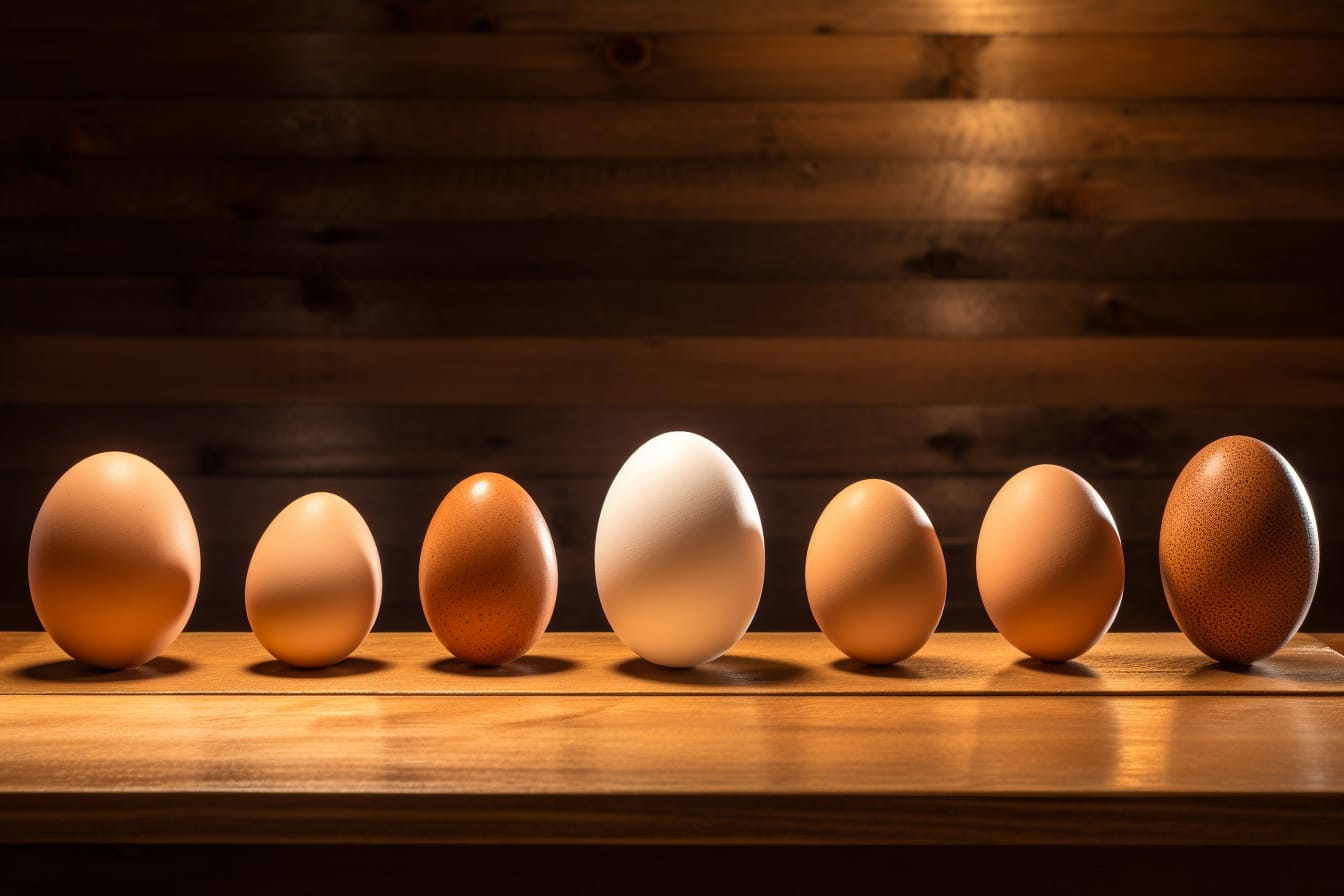If you are new to raising chickens and started out with chicks, after months of waiting you’ll eventually be rewarded with your first chicken eggs – which is super exciting! However, these first eggs, sometimes known as Pullet Eggs, are often on the smaller-side, might be wonky in shape, or have something else that makes them a bit different from regular eggs.
A common question I see asked is can you eat the first eggs laid by a chicken? The short answer is, Yes! And they’re delicious. But for more information about these “pullet eggs,” why they’re different, and what to do with them is discussed in detail in this post.
What are Pullet Eggs?
The first eggs that your chicken lays are sometimes called “pullet eggs.” A pullet refers to a young female chicken that is under one year of age and has not yet reached maturity to lay eggs consistently. Typically, pullets are between the ages of four to six months old. Once a pullet starts laying eggs regularly, usually around six months of age or later, she is then considered a mature hen. The term “pullet” specifically denotes a young female chicken before she becomes a productive layer in a flock.
What do Pullet Eggs look like?
For the most part, pullet eggs look like regular eggs; however, they are often smaller than regular eggs (compared to the regular size for the particular breed of hen), and can sometimes have slight deformations or unusual shapes.
Why do Pullet Eggs happen?
While it is possible your chicken may start laying normal-sized and shaped eggs right away, sometimes it takes them a couple times to get it right. At 4-6 months, your female chicken’s bodies are still developing and the process of producing a proper egg may not be quite up to par yet. After laying for a couple weeks, your chickens should start laying normal hen eggs and will no longer be producing what could be considered a pullet egg.
Why are some people worried about if they can eat pullet eggs or not?
As mentioned earlier (and in the title), some people question whether or not it’s safe to eat the first eggs that come out of your chickens. This is a perfectly fine question to ask!
Often the concerns are regarding:
- Worry that the eggs might not be fully developed
- Something potentially wrong / inedible bits
Please don’t worry about these aspects of pullet eggs, and feel free to eat them like any regular egg – unless there’s something actually wrong with them (such as got too old and no longer good to eat/smelly).
How to cook Pullet Eggs
There’s no secret or anything special you need to do with pullet eggs that’s different than regular. Just cook them like you would normally cook your eggs. Some things to note is that since they’re typically smaller you may need more of them to make your regular-sized portions. Pullet eggs are typically have a slightly higher ratio of yolk to white than regular eggs so the color may end up being more yellow/orange than usual.
Why you should eat your Pullet Eggs
- They’re basically a normal egg – Despite some differences, such as size and shape, pullet eggs are completely normal and edible.
- They’re a novelty – After a couple days to weeks of laying a pullet will become a full-fledged hen and their eggs will become larger and more normal-sized. Ignoring eggs from smaller breed hens like bantams and quail, it’s not often you can eat miniature-sized eggs.
- Nutritional benefits – Pullet eggs have all of the nutritional benefits of regular eggs which includes vitamins A, B, E, and K as well as essential minerals such as phosphorus, calcium, and zinc.
- Some people consider them more delicious than regular eggs – Pullet eggs tend to have a larger proportion of yolk to white which makes them slightly more nutrient dense (for their size). While the difference is minimal, some people believe this different ratio makes them more delicious.
Some reasons you may NOT want to eat Pullet Eggs
- The egg is old / has gone bad – if you somehow missed seeing the first eggs your chickens laid (due to their small size or being laid in weird places so you didn’t find them in a timely manner), then there’s a possibility that the egg is old and no longer good to eat. This can be from regular age, or perhaps extreme temperatures got to the egg before you could. If you’re not sure how old an egg is, and it might be considerably old, use one or more of the suggested methods for checking egg freshness before you decide to consume it.
- Shell was not fully formed – Another time you may not want to eat a pullet egg is if there are significant defects with the shell. Things like calcium deposits (extra bumps/texture) won’t cause issues with the yolk and whites so they are fine to eat, but of the shell is overly soft, or there’s no shell at all, then it’s often better not to eat the egg at all in case bacteria has already gotten into it. If you suspect the egg is relatively safe (once opened up there’s no smell etc), then you could cook the egg and give it to a pet (or even back to your chickens) — or eat yourself if you’re not too picky and know that the membrane was not punctured before you picked it up.
- Chicken has been on certain antibiotics or other meds – Typically, when chickens are vaccinated or given antibiotics at a young age, by the time they are of laying age, there should be no carry-over affects of the chemicals in the eggs they produce. If your young chickens became sick and you had to provide them antibiotics etc. closer to egg-laying age, then you may want to hold off eating their eggs for a while. Check out this article for more in-depth information about antibiotics and chicken eggs: “Antibiotic residues in poultry eggs and its implications on public health: A review” https://www.sciencedirect.com/science/article/pii/S2468227622003611
- Baking – Most recipes for baking need fairly precise amounts of ingredients. When a recipe calls for 1 or 2 eggs, it will typically be referring to a standard egg size. While you could still use pullet eggs for baking, you may need to add an extra egg but doing so will change the texture of whatever you’re baking so it will be more difficult to achieve consistency. Extra eggs in baking will typically result in the batter being dense (since eggs are a binding ingredient).
Commercial farmers and Pullet Eggs
Commercial farmers are required to provide products that are to standard sizes and specifications. Since pullet eggs are smaller than the standard required for what the sell, these smaller eggs will often get tossed while smaller-scale farmers are more likely to use these eggs for their own family.
Conclusion
So! If someone tells you that you can’t eat the first egg laid by a chicken… they’re very misinformed. The first eggs laid by a chicken are very much edible, and delicious at that. Though small, and perhaps a bit curiously shaped, there’s (typically) nothing wrong with them at all.

